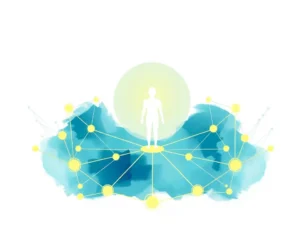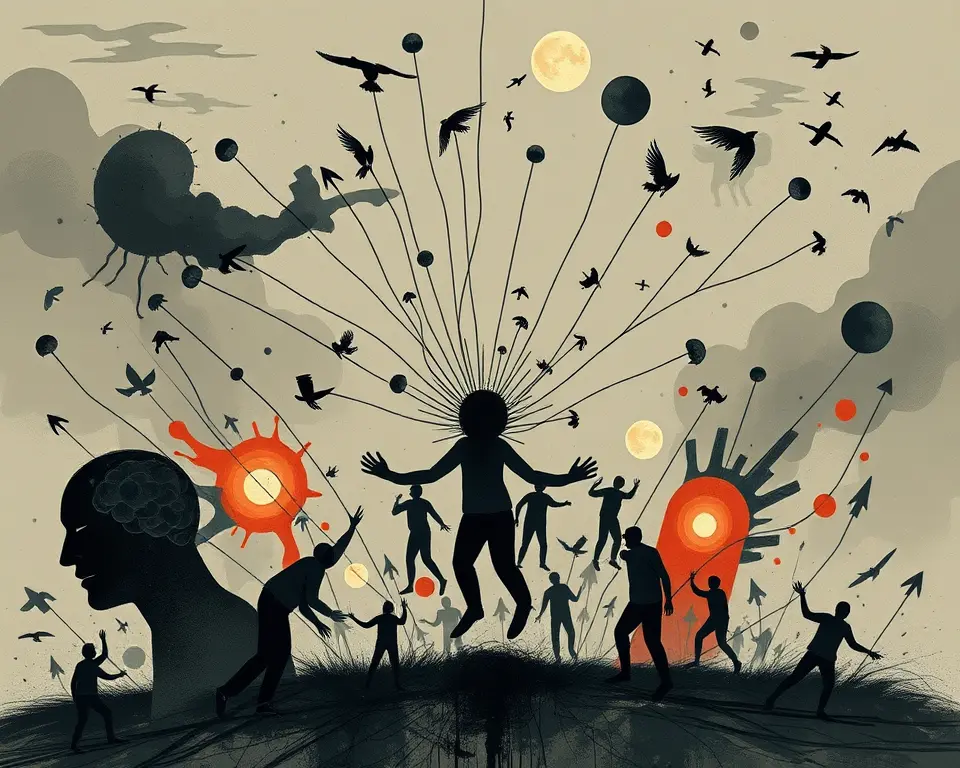Emergencies, whether natural disasters, armed conflicts, or public health crises, can profoundly impact mental well-being. The disruption to daily life, loss of loved ones, and uncertainty about the future can trigger a range of psychological responses. Understanding the mental health effects of emergencies and knowing how to provide support are crucial for individuals, communities, and societies to navigate these challenging times.
The Psychological Impact of Emergencies
Almost everyone affected by emergencies experiences some form of psychological distress. These reactions are often normal responses to abnormal situations. Common short-term psychological effects include:
- Shock, fear, and confusion: These are typical immediate reactions to traumatic events.
- Feelings of helplessness and uncertainty: These feelings are especially prevalent among those who have lost homes or loved ones.
- Difficulty sleeping and concentrating: Sudden life changes and stress can lead to increased anxiety, making it hard to sleep or focus.
- Increased anxiety, irritability, and anger.
- Grief, sadness, and hopelessness.
While many people recover over time, a significant minority may develop more severe mental health conditions. Long-term psychological effects can include:
- Post-traumatic stress disorder (PTSD).
- Depression and anxiety disorders.
- Survivor’s guilt.
- Chronic stress and insomnia.
- Increased substance use.
Children are particularly vulnerable to the mental health effects of disasters. They are more likely than adults to experience continued trauma-related symptoms. Exposure to violence, displacement, and separation from caregivers can have long-lasting consequences on their emotional and social development.
It’s important to recognize that these mental health challenges can also stall a child’s development, limiting their opportunities to participate in society. Moreover, individuals with mental health conditions often face stigma, discrimination, and even human rights violations, further compounding their difficulties.
Who is at Risk?
While emergencies can affect anyone’s mental health, certain groups are at higher risk:
- Children and adolescents: They have a limited capacity to cope with trauma and are more dependent on caregivers.
- Older adults: They may have pre-existing health conditions and be more socially isolated.
- People with pre-existing mental health conditions: Emergencies can worsen existing conditions and disrupt treatment.
- First responders and frontline workers: They are exposed to trauma and stress, which may lead to burnout and mental health problems.
- Low-income communities: They often have fewer resources and support systems to cope with the aftermath of disasters.
- Marginalized groups: They may experience discrimination and have limited access to services.
- People with disabilities: They may face additional challenges in accessing assistance and support.
- Those with a history of trauma: Previous traumatic experiences can increase vulnerability to mental health problems after an emergency.
- Those with limited social support: Strong social connections are vital for resilience.
Providing Mental Health Support in Emergencies
Providing mental health and psychosocial support (MHPSS) is an essential part of emergency response. International guidelines recommend a range of activities, from community self-help to psychological first aid and clinical mental health care.
Psychological First Aid (PFA)
Psychological first aid (PFA) is an evidence-informed approach to assist people in the immediate aftermath of a disaster or traumatic event. It is designed to reduce stress symptoms and promote healthy coping. PFA is not a substitute for therapy, but rather an initial intervention to provide comfort, safety, and support. Anyone can be trained to provide PFA.
The core principles of PFA are often described as the “3 Ls”: Look, Listen, and Link.
- Look: Observe the situation to identify those who may need help. Pay attention to people who seem distressed, withdrawn, or disoriented. Check for safety and security risks, physical injuries, and immediate needs.
- Listen: Approach people with empathy and respect. Offer a calm and comforting presence, and listen actively to their concerns. Do not judge or pressure them to share their experiences.
- Link: Help people connect with information, services, and social support. Provide practical assistance with basic needs like food, water, and shelter. Connect them with family members, friends, and community resources.
The goals of PFA are to promote:
- Safety
- Calm and comfort
- Connectedness
- Self-empowerment
- Hope
Other Essential Actions
Beyond PFA, several other actions can be taken to support mental health during emergencies:
- Strengthen community self-help and social support: Encourage community members to support each other. Ensure the involvement of vulnerable groups, including people with mental health conditions.
- Share key messages and service information: Provide accurate and timely information to promote positive coping and help-seeking.
- Offer clinical mental health care: Provide access to mental health professionals for those with priority conditions. Use evidence-based protocols such as the mhGAP Humanitarian Intervention Guide (mhGAP-HIG).
- Protect the rights of people with severe mental health conditions: Ensure access to mental health care and other basic needs for those living in institutions.
- Establish referral networks: Create connections between mental health specialists, general health care providers, community supports, and emergency relief services.
- Address practical needs: Providing smooth and efficient practical support is an important part of a mental health response. Meeting basic needs and ensuring safety can significantly reduce distress.
- Promote resilience: Encourage activities that foster resilience, such as exercise, mindfulness, and spending time with loved ones.
- Take breaks from the news: While staying informed is important, taking breaks from news and social media can help protect mental health.
- Develop coping strategies: Deep breathing exercises, mindfulness techniques, or engaging in relaxing activities are all helpful coping strategies.
Building Resilience and Promoting Long-Term Recovery
Mental health is crucial for the social and economic recovery of individuals, communities, and countries after emergencies. By addressing mental health needs and building resilience, societies can mitigate the long-term consequences of disasters and promote a return to normalcy.
Individual Strategies
Individuals can take several steps to protect their mental health and build resilience:
- Practice self-care: Engage in activities that promote physical and mental well-being, such as healthy eating, exercise, and sufficient sleep.
- Connect with others: Spend time with friends and family, and seek support from trusted individuals.
- Share your feelings: Talk to others about your experiences and emotions.
- Limit exposure to news: Take breaks from watching, reading, or listening to news about the emergency.
- Engage in relaxing activities: Practice mindfulness, meditation, or other relaxation techniques.
- Seek professional help: If you are struggling to cope, seek help from a mental health professional.
- Follow your treatment plan: If you have a mental health condition, continue following your treatment plan.
Community Strategies
Communities also play a vital role in promoting mental health and resilience:
- Promote social connectedness: Encourage community events and activities that bring people together.
- Support local organizations: Volunteer time or donate resources to organizations that provide assistance to those affected by the emergency.
- Raise awareness: Educate community members about the mental health effects of emergencies and available resources.
- Advocate for policies: Support policies that promote mental health and access to services.
Systemic Strategies
At the systemic level, governments and organizations can take steps to strengthen mental health systems and improve emergency preparedness:
- Integrate MHPSS into emergency preparedness plans: Include mental health considerations in all aspects of emergency planning.
- Establish cross-sectoral MHPSS Technical Working Groups: Coordinate activities and ensure collaboration among different sectors.
- Invest in mental health systems: Allocate resources to develop better care systems for the long term.
- Provide training: Equip frontline workers with the skills to provide psychological first aid and other forms of support.
Resources and Support
Numerous resources are available to provide mental health support during emergencies:
- 988 Suicide & Crisis Lifeline: Call or text 988 to connect with trained crisis counselors.
- Crisis Text Line: Text HOME to 741741 for free, 24/7 crisis support.
- SAMHSA’s Disaster Distress Helpline: Call 1-800-985-5990 for 24/7 crisis counseling and support related to disasters.
- The National Helpline for Mental Health (SAMHSA): Call 1-800-662-HELP to be connected to treatment facilities, support groups, and community-based organizations.
- Local mental health services: Contact your local community mental health center or mental health professional.
- Employee Assistance Programs (EAP): If you have a job, ask your employer’s human resources department if they have an EAP.
- Mobile crisis teams: Mental health professionals who can respond to emergencies outside of traditional clinical settings.
Conclusion
Emergencies can have a significant impact on mental health. By understanding the psychological effects of disasters and learning how to provide support, we can help individuals, families, and communities cope with these challenging times. Psychological first aid, community support, and professional mental health care are all essential components of an effective emergency response. By prioritizing mental health and building resilience, we can help people recover from disasters and create stronger, more supportive communities.










